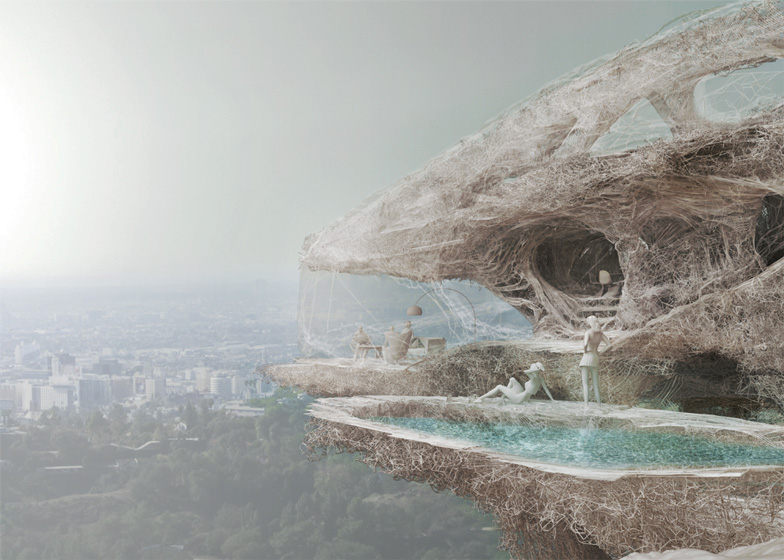
Softkill’s prototype design. Courtesy of Softkill.
February 14, 2013
You might not think there would be very many contenders in a race to see who can build a house using additive manufacturing (AM), and mainly you’d be right. Lately, though, the idea has been cropping up more and more often. The European Space Agency is even looking into using AM to build housing on the moon.
Monolite UK has been chugging along with the intent on printing a house using its D-Shape process for a while now, and has gotten some new attention from the artistically designed Landscape House. Now, a new challenger has appeared. London-based Softkill Design has a plan to build a house using more traditional AM materials.
Where Monolite UK wants to use sand with a binder to build the shell of a house, Softkill wants to actually print out the entire thing using plastic material, with a fibrous, algorithm-design. Softkill designer Gilles Retsin even talked some smack about the competing process.
“We actually don’t even consider that a 3D printed building because he is 3D printing formwork and then pouring concrete into the form,” said Retsin. “So it’s not that the actual building is 3D printed.”
Softkill’s prototype model certainly doesn’t look like anything produced by D-Shape. In fact, it doesn’t really look like anything I’ve ever seen before with the label “house” attached to it. The idea is to use AM to create useful structures needed to bear the weight of the house, without all the filler. Here’s Softkill’s technical explanation of the process:
Softkill algorithm combines the empirical and real-time character of a particle-spring setup with the computational model of finite element analysis found in typical Topological Optimization methods. Particles in a volume are redistributed (either added or removed) through calculating spring force.Matter is then redistributed along principal lines of stress while structural agency is embedded through a procedural based logic of connections. What emerges is a thick layer of a porous, fibrous construct. Dissolving geometry through an abstract material articulation, resulting in a non-geometrical structure that is materially efficient, with a high degree of transparency and stiffness, while being extremely articulated, tactile, and ornate.
According to Softkill, an entire house could be printed out off-site in three weeks, and then be transported in reasonably sized chunks that could be snapped together. The construction process is envisioned as a single day project, without any, “bolting, screwing or welding” required. The company hasn’t released any sort of projected cost for the home, but claims it will be competitive with more traditional building methods.
Below you’ll find a short video that shows the Softkill Algorithm.
Subscribe to our FREE magazine, FREE email newsletters or both!
About the Author
John NewmanJohn Newman is a Digital Engineering contributor who focuses on 3D printing. Contact him via [email protected] and read his posts on Rapid Ready Technology.
Follow DE






